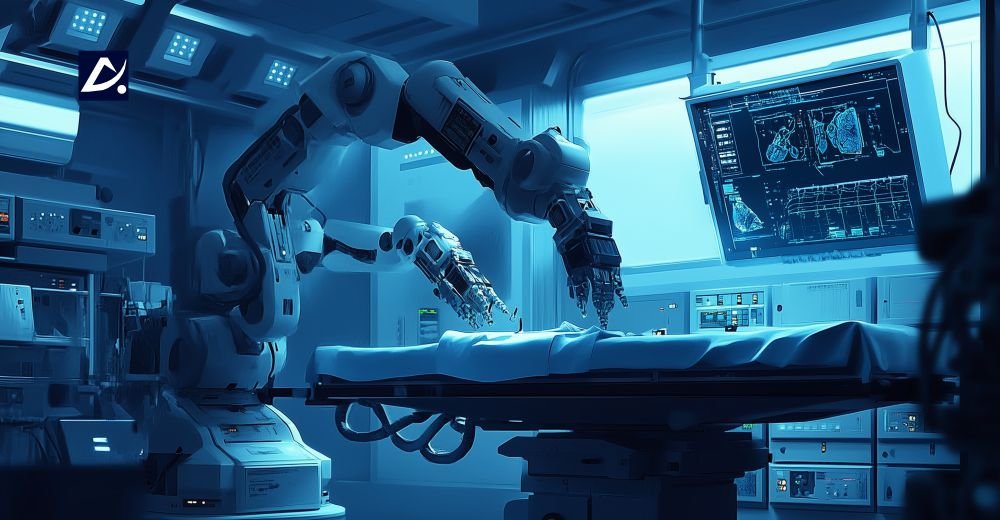Smart Hospitals in Asia
The Asian healthcare scene is witnessing a revolutionary makeover with the advent of smart hospitals, in which robotics and artificial intelligence (AI) are revolutionizing patient care. These state-of-the-art facilities bring together latest technologies to improve clinical results, boost operational effectiveness, and advance patient experiences. Be it robotic surgeries or AI-based diagnostics, smart hospitals are raising the bar for healthcare delivery in the region.
The Rise of Smart Hospitals in Asia
The digital transformation of the healthcare industry in Asia is rapidly increasing due to the increasing healthcare demands, aging population, and cost-cutting mandates. Leaders include Singapore, Japan, South Korea and China whose governments and other organizations are making huge investments in smart hospital facilities. Smart hospitals make use of integrated systems, IoT sensors, and data analytics to build a combined ecosystem with a focus on the patient-centric approach.
Artificial intelligence and robotics are becoming the main features of smart hospitals because they can automate routine processes, enhance the precision and quality of medical interventions, and provide data-based insights on personal treatment. An example is that Changi General Hospital in Singapore and Fujita Health University Hospital in Japan have adopted AI-powered systems and robot-assisted care support to automate the operation process and shorten the recovery time of patients. These innovations are not only addressing the current healthcare needs but also are directed to address future needs of an area that has diverse healthcare needs.
Robotics in Intelligent Hospitals
Robotics is transforming surgical and procedural work in Asian intelligent hospitals. Robot-assisted procedures, like those accomplished with the da Vinci Surgical System, enable minimally invasive intervention with more accuracy, less blood loss, and quicker recovery. At Severance Hospital in Seoul, South Korea, there has been a remarkable rise in successful results for complicated procedures like prostatectomies and heart operations thanks to robotic systems.
Aside from surgery, robots are revolutionizing patient care provision. Japan, with an aging population, has been using robots such as Robear to help in lifting and moving patients to decrease physical labor on personnel. In China, robotic systems are utilized in hospitals such as the First Affiliated Hospital of Zhejiang University to deliver medications and for disinfection, which helps minimize contact with humans and infection, especially in the aftermath of pandemics.
AI-Enabled Diagnostics and Care
The intelligent hospitals revolve around AI, promoting diagnostics, patient treatment planning, and monitoring. The machine learning algorithms digest copious data, such as medical imaging, patient history, and genomic data, to recognize patterns and predict results with unrivaled accuracy. In India, the use of AI-based technology in Apollo Hospitals has included the detection of breast cancer and diabetic retinopathy at an early stage, and it is used to make timely interventions that result in improved survival rates.
In China, AI is being used to triage patients via the Alibaba Health AI Doctor, which can help reduce wait times and take pressure off overcrowded hospitals. In Singapore, National University Hospital also uses AI to predict patient deterioration in intensive care units to ensure clinicians can take action before deterioration occurs.
Improving Patient Experience
Technology-based solutions are important in Smart hospitals since they focus on patient experience. Chatbots and virtual assistants powered by AI, such as in Samsung Medical Center in South Korea, can assist patients 24 hours a day and answer any questions and direct them through hospital procedures. Such tools decrease the level of anxiety and multiply satisfaction through providing real-time support in several languages, which satisfy the populations of Asia.
Robotics also accelerates rehabilitation. In Singapore, Hocoma’s Lokomat robotic gait-training system assists stroke patients in regaining mobility sooner than conventional physiotherapy. With consistent, data-driven therapy, such systems speed recovery and enhance quality of life.
Challenges and Opportunities
Though there is the promise of smart hospitals, all is not well. The cost of implementation, being prohibitively expensive, is a major barrier, as are the limitations of inter-system interoperability and the need for skilled personnel to operate advanced systems, particularly in developing Asian countries. Security and protection of data are also very important since smart hospitals are based on computerized systems, which contain sensitive patient data.
Yet, these challenges open up opportunities for innovation. Public-private partnerships and governments are working together to overcome cost barriers with subsidies and public-private partnerships. Malaysia’s Smart Hospital Project, for example, targets the inclusion of AI and robotics in public hospitals to enable advanced care for underserved populations. Training for healthcare professionals is also being scaled up to cover the gap in skills.
The Future of Smart Hospitals in Asia
Asian smart hospitals are a new paradigm in healthcare delivery, leveraging the help of robots and AI to govern the outcomes of patients. These technologies are changing the way healthcare is delivered, with accurate surgical procedures, pre-diagnosis and personalized treatment. Despite the fact that such issues as cost and data security are still going to count, the region adores innovations and collaboration, and it is the era of smart hospitals becoming the basis of healthcare excellence. With this further development of such facilities, it can be expected that these will bring improved health outcomes, greater efficiency, and level of care to millions of people in Asia.



